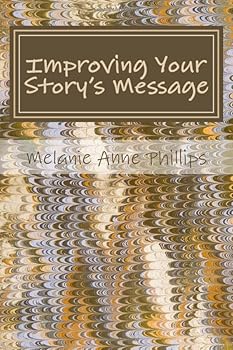Improving Your Story's Message (Writing Tips, Tricks, and Techniques)
From the introduction:Not all stories have a message. Sometimes a novel, screenplay or stage play may be designed as an entertainment or an experiential piece in which there is no authorial intent to make a statement, alter attitudes, or convince the readers or audience of a particular point of view.At the other extreme, a work may all about the message and be created for the specific purpose of conveying, imparting, implanting or changing perspectives, opinions or perceptions.Most often, a message is neither the reason for the piece nor is it missing. Rather, the message is simply another element of the story along with all the other dramatic story points and subject matter.If you choose to incorporate a message in your story, it is not a simple matter of merely stating what you want to get across. A successful message must not be stated, but illustrated. And the way to present it is through many minor instances, woven almost imperceptibly into the fabric of the unfolding story in such a manner as to create a sub-textual pattern visible only when the last thread is laid.This book is a compilation of the best articles on message development techniques I've written in my quarter century as a teacher of creative writing. They cover the entire spectrum from determining the message you want to send to developing the moments in which it impacts your readers or audience and the most powerful means for perpetuating its influence in them after they close the book or leave the theater.
Format:Paperback
Language:English
ISBN:1492321702
ISBN13:9781492321705
Release Date:September 2013
Publisher:CreateSpace Independent Publishing Platform
Length:49 Pages
Weight:0.28 lbs.
Dimensions:9.0" x 0.1" x 6.0"
Related Subjects
Language ArtsCustomer Reviews
0 rating





